| NAME / WORK/ LIFE TIME |
| SATYAJIT RAY Satyajit Ray was born on May 2, 1921, in an intellectual and affluent family in Calcutta, India. His grandfather, Upendra Kishore Ray (Roychowdhury) was a distinguished writer, painter, a violin player and a composer. He was also a pioneer in half-tone block making and founded one of the finest presses in the country ? U. Ray & Sons. He died six years before Satyajit Ray was born. His father, Sukumar Ray, the eldest son of
Upendra Kishore, studied printing technology in England and joined the family business. He
too was an eminent poet, writer and illustrator of nonsense literature in the tradition of
Lewis Carroll and Edward Lear. Sukumar Ray fell ill the year Satyajit Ray was born with a dreaded tropical disease of the time ? Kala-azar. He regularly contributed poems, stories and illustrations to ‘Sandesh’, a children’s magazine in Bengali which Satyajit Ray’s grandfather had started. Sukumar Ray died in 1924. Need less to say the child Satyajit was fascinated by the block making and the printing process. In 1880’s, Ray family had embraced ‘Brahmo Samaj’, sect within Hindu society. Brahmo was a reaction to
Christianity (at that time, India was under British colonial rule and Calcutta was the
seat of power), western literature and orthodox Hindu practices such as ‘Sati’. With a cosmopolitan and rational outlook, Raja Ram Mohan
Roy founded the Brahmo. Later Brahmos were led by Devendranath Tagore, father of
Rabindranath Tagore. The progressive outlook of the Brahmo Samaj
strongly influenced Satyajit Ray's work. Many of Ray’s films would later show this progressive outlook and a
strong aversion to religious fanaticism (Devi, Charulata, Teen Kanya, Sadgati, Ghare Baire
and Ganashatru to name a few). |
| RABINDRANATH TAGORE Tagore was a Bengali writer who won the Nobel Prize for Literature in 1913. He was born
in Calcutta and later traveled over the world. He grew up in a large house where there was
much writing and artistic activity, and he wrote prolifically his entire life, producing
more than 3,000 songs as well as volumes of novels, short stories, plays, and poems. In
later life he delivered lectures and made many paintings. He wrote what are now the
national anthems of both India and Bangladesh. (1861〜1941) |
| MOTHER TERESA Mother Teresa is Albanian by birth; her
original name is Agnes Gonxha Bojaxhiu. In 1948, Mother Teresa became a citizen of India.
At the age of 18, Mother Teresa attended the religious Order called Our Lady of Loreto in
Ireland. She received her spiritual training in Dublin, Ireland and Darjeeling, India. In
1931, Mother Teresa took the name of Teresa from the French nun Thérèse
Martin, who was canonized in 1927 with the title St. Thérèse of Lisieux. In
1937, Mother Teresa took her vows. She taught for 20 years in Saint Mary's High School in
Calcutta, India. In September 10, 1946, Mother Teresa received another call from God to
serve the poorest of the poor who live in the streets. In 1948, Pope Pious XII granted
Mother Teresa permission to leave her duties as an independent nun, and she began to share her life with the poor, the sick and the hungry of Calcutta. Mother Teresa established a congregation called Missionaries of Charity. Her initial work consisted of teaching the children of the streets how to read. In 1950, Mother Teresa began to care for lepers. In 1965, Pope Paul VI put the Missionaries of Charity under the control of the Papacy and gave authorization to Mother Teresa to expand her Order to other countries. Centers have opened almost everywhere around the world to assist lepers, the elderly, the blind, and people living with AIDS. Mother Teresa also opened schools and homes for the poor and abandoned children. |
| Netaji Subhas Chandra Bose
Subhas Chandra was born on January 23rd 1897 in Cuttack (in present day Orissa) as the
ninth child among fourteen, of Janakinath Bose, an advocate, and Prabhavatidevi, a pious
and God-fearing lady. A brilliant student, he topped the matriculation examination of
Calcutta province and passed his B.A. in Philosophy from the Presidency College in
Calcutta. He was strongly influenced by Swami Vivekananda's teachings and was known for
his patriotic zeal as a student. His parents' wishes kept him away from the Indian freedom
struggle and led him into studies for the Indian Civil Service in England. Although he finished those examinations also at the top of his class (4th), he could not complete his aprecentship and returned to India, being deeply disturbed by the Jallianwalla Bagh massacre. He came under the influence of Mahatma Gandhi and joined the Indian National Congress (a.k.a. Congress). Gandhiji directed him to work with Deshbandhu Chittaranjan Das, the Bengali leader whom Bose acknowledged as his political guru. |
|
Mahatma Gandhi Gandhi (1869-1948), also known as Mahatma Gandhi, was born in Porbandar in the present state of Gujarat on October 2, 1869, and educated in law at University College, London. In 1891, after having been admitted to the British bar, Gandhi returned to India and attempted to establish a law practice in Bombay, with little success.
Two years later an Indian firm with interests in South Africa retained him as legal adviser in its office in Durban. Arriving in Durban, Gandhi found himself treated as a member of an inferior race. He was appalled at the widespread denial of civil liberties and political rights to Indian immigrants to South Africa. He threw himself into the struggle for elementary rights for Indians. |
Jagadish Chandra Bose was born in India in 1858. He received his education first in India, until in 1880 he went to England to study medicine. Bose returned to India, taking up a post initially as officiating professor of physics at the Presidency College in Calcutta. Here he converted a small enclosure adjoining a bathroom into a laboratory. In 1895 Bose gave his first public demonstration of electro - magnetic waves, using them to ring a bell remotely and to explode some gunpowder."The first successful wireless signalling experiment by Marconi was not until May 1897. The 1895 public demonstration by Bose in Calcutta predates all these experiments.By about the end of the 19th century, the interests of Bose turned away from electromagnetic waves to response phenomena in plants. He retired from the Presidency College in 1915, but was appointed Professor Emeritus. Two years later the Bose Institute was founded. Bose was elected a Fellow of the Royal Society in 1920. He died in 1937. Father of Telecommunication - Bose or Marconi ? Nearly 100 years after Guglielmo Marconi's first transatlantic wireless communication, it has come to light that the detector he had used to pick up the signal was invented by Professor Jagadish Chandra Bose. The discovery made by a group of scientists of the US-based IEEE proves what has been a century-old suspicion in the world scientific community: that the honour of being the pioneer in wireless communication should have gone to Bose and not Marconi. ジャガデッシ・チャンドラ・ボース(JagadishChandra Bose ):教授グリエルモ・マルコーニ( Guglielmo Marconi)が初めて無線通信を成し遂げて100年ほどたって、彼が信号を手に入れるのに使った検出器はジャガデッシ・チャンドラ・ボースよって発明されたことが明るみに出る。この発見は、アメリカ電気電子技術者協会(IEEE)所属の科学者グループによって科学世界での一世紀に渡る疑いを、解き明かした。無線通信発明の名誉はマルコ -ニではなく、ボースへゆくべきである。 Bose's invention of the mercury coherer with a telephone, which Marconi used, was published in the Proceedings of the Royal Society, London, on April 27, 1899, over two years before Marconi's first wireless communication on December 12, 1901, from Newfoundland, now in Canada. In January, IEEE will publish a special issue, where evidence will be presented to show that Marconi had used the sensitive semiconductor diode device invented by Bose. マルコニーが使った、ボースの発明となる、電話器が付いたマーキュリー・コヒーラは、英国学士院で審理されるなかで1899年4月27日公表された。これは、マルコニーの1901年12月12日行った最初の今のカナダニューファンドランドからの無線通信は、これより2年以上前のことである。1月IEEEは、特別号でボースによって発明された高感度半導体素子装置をマルコニーが使っていたことを示す証拠が公表する旨発表された。 Investigations by the IEEE group show that both Bose and Marconi were in London in 1896-97. The Italian was conducting wireless experiments for the British post office and Bose was on a lecture tour. Both scientists were interviewed by McClure's Magazine (now defunct) in March 1897. In the interview, Bose came out with high praise for Marconi, then under attack from established British scientists who doubted his credentials. Marconi never could make it to college because of his poor high school record. Bose also said he was not interested in commercial telegraphy and that others could use his research work. In 1899, Bose unveiled his invention of the mercury coherer with the telephone detector in a paper at the Royal Society. In a curious coincidence, Bose lost his diary containing an account of the invention and a prototype of the detector during a lecture tour in the same year. Brilliant Marconi quickly grasped the commercial importance of Bose's invention and began to explore it secretly. His childhood friend Luigi Solari started experimenting with Bose's invention and presented Marconi with a slightly modified design in the summer of 1901 for use in the upcoming transatlantic experiment. The Italian scientist then went on to apply for a British patent in his name, never acknowledging his debt to Bose. Securing Bose's place in the history of long-distance communication, the IEEE paper will narrate how the truth was suppressed all these years, even though it was there for all to see in the 1899 Proceedings of the Royal Society. A combination of factors like naivete about patenting, plain misfortune and politics of the contemporary times weighed against Bose, said a scientist associated with the IEEE project. (Source: The Telegraph, Calcutta; Oct 31, 1997 )
|
| Amartya Sen Amartya Sen is, inarguably, the most
distinguished economist India has ever produced. Some of the major events of his career
are highlighted in the accompanying box. If the list therein is exiguous, it's because
life is governed by such unpleasant realities as word limits. An accurate and exhaustive
catalogue would closely follow the contours of H. Hatterr's capacious fantasy: "...
fellow of the royal geographical, humane, automobile, asiatic, astronomical and
microscopic societies ..." With Sen, it has been a case of life imitating art. As part of the brief given to this writer, it was delicately suggested that he should steer clear of unrestrained panegyrics. Since one's objectivity is on the line, one takes it that some element of negative criticism of the subject is called for in the interests of completeness and balance. To this end, it may be useful to resort to Sen's own technique of enumeration. Firstly, for all of the wonderful lucidity of his exposition, some of his formal papers, with their trademark combination of fine-grained logic, minute differentiations, and trickily nuanced arguments, can tax the patience and stamina of even his most devoted students: indeed, a fellow-economist was one provoked to describing him, with some asperity, as "that distinguished distinguisher". Secondly, while Sen has always been a generous and courteous critic of the work of others, he has also been known to be a stubborn and at times prickly defender of his own viewpoint against the criticism of others (as opponents of his work on liberty, for example, will testify wryly). One is here reminded of the exhortation, addressed to an unyielding dissenter, by an ally of that redoubtable rhetorician h*y*m*a*n k*a*p*l*a*n: "Give an inch, Shimmelfarb!" Thirdly, and finally, I believe it would be a great kindness to Professor Sen to suggest that his handwriting is execrable. Surely nobody can now accuse this writer of bias.
A remarkable facet of Sen's research output has been the range and versatility of its coverage. He has worked not only in economics but also in philosophy; and in crossing disciplinary borders, he has nonetheless managed to preserve a certain continuity and smoothness of transition whereby one is enabled to perceive his work as reflecting a seamless whole. Within economics, he has made original and critical contributions to development theory, planning, capital and growth theory, investment appraisal, the study of technology and employment, welfare economics, social choice theory, poverty and inequality measurement, issues in the causes and redressal of famines and destitution, and population policy. This roster naturally leaves out much else of interest. His philosophical work, insofar as it is possible to separate it from his economics, has made deep explorations into issues of justice, inequality, morality, liberty, freedom, rationality and objectivity. As a philosopher he has eminently fulfilled those requirements that have been laid down by Stendhal, and which Nietzsche held in such high esteem: "In order to be a good philosopher, one must be dry, clear, devoid of illusion." More recently, Sen has been concerned to be a committed commentator on issues of social and political salience, coming out strongly, as he has done, against religious fundamentalism and the bomb. Taking his work as a whole, one especially striking feature of it has been his capacity to systematically anticipate his own future concerns, so that seemingly disparate themes evolving over time are often tied together by a running thread which is part of one grand design: a testimony to both the precocity and prescience of the Sen of progressively earlier vintages. "And the end and the beginning," as Eliot said, "were always there." What commands the attention of the professional economist is the almost single-handed effort undertaken by Sen to restore economics to the status it once enjoyed under the banner of classical political economy. His great achievement has been to re-establish both the centrality and the scientific validity of value-orientation in economics, to underline the necessity of seeing the subject as being concerned with normative ("ought-related") propositions as much as with positive ("is-related") propositions. Like another great contemporary of his, Satyajit Ray, Sen has expressed himself firmly and unequivocally, but not stridently. His own standing and credibility in the world of scholarship have much to do with the deep responsibility he has shown in deferring to the demands placed by the harsh rigours of disciplinary protocol, and to the demands made by a just vision of life itself. What can one say of his impact? In his book Let Us Now Praise Famous Men, James Agee has warned against that ultimate instrument of a great person's emasculation: acceptance. Tokenism is the enemy of engagement. Amartya Sen's effort is awesome. One only has to look around to see that the mission to which his life's work points has scarcely begun to be addressed yet. S.Subramanian is a professor at the Madras Institute of Development Studies. He was taught by Professor Amartya Sen. 1933:
Born in Santiniketan. |
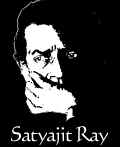 (1921〜1992)
(1921〜1992)
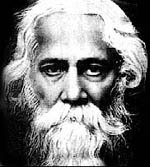
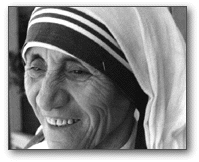 (1910〜1998)
(1910〜1998)
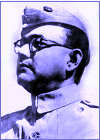 (1897-1945)
(1897-1945)
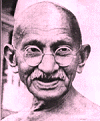 (1869-1948)
(1869-1948)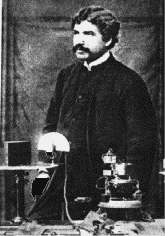

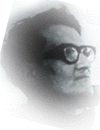 (1933〜 )
(1933〜 )